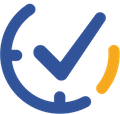Ever feel like you’re trapped in a time-warp tornado? Tasks swirl around you like debris, deadlines whooshing past faster than you can blink, and the clock seems to be on fast-forward. Welcome to the chaotic carnival of poor time management, where stress is the main attraction, productivity goes on a roller coaster ride, and self-doubt becomes your not-so-fun sidekick. It’s a wild ride that most of us have taken, leaving us dizzy, discouraged, and desperately seeking the exit sign. But with the right strategies, you can change your approach to time and skyrocket your productivity. Let’s dive into some tips to help you become a time management maestro.
1. Set SMART Goals
The foundation of effective time management is setting clear, actionable goals. Enter the SMART framework:
– Specific: Pin down exactly what you want to achieve. No vague wishes allowed!
– Measurable: How will you know when you’ve nailed it? Numbers are your friends here.
– Achievable: Dream big, but keep one foot on the ground. We’re aiming for challenging, not impossible.
– Relevant: Make sure your goal aligns with your bigger life plans. No random quests!
– Time-bound: Give yourself a deadline. It’s like a friendly kick in the pants from Father Time himself.
Write your SMART goals down and place them somewhere visible. The act of writing reinforces commitment, and seeing them daily keeps you focused.

2. Prioritize Like a Pro
Not all tasks are created equal. Use the Eisenhower Matrix to categorize your to-do list:
– Urgent and Important: These are your “drop everything and do it now” tasks. Think about burning deadlines and crisis management.
– Important but Not Urgent: Schedule these bad boys. They’re the building blocks of your long-term success.
– Urgent but Not Important: Delegate if you can. If not, tackle them after the important stuff.
– Neither Urgent nor Important: Show these tasks the door. They’re the productivity vampires sucking away your precious time.
A project manager might prioritize finalizing a client presentation (urgent and important) over organizing their email inbox (neither urgent nor important).

3. The Art of Strategic Breaks
Regular breaks aren’t just nice to have – they’re essential for maintaining focus and preventing burnout. But not all breaks are created equal.
– Micro-breaks (2-3 minutes): Perfect for a quick stretch, a few deep breaths, or a lap around your desk. It’s like hitting the reset button on your focus.
– Short breaks (10-15 minutes): Ideal for a brisk walk, a quick meditation session, or some light exercises. Think of it as a power nap for your productivity.
– Longer breaks (30+ minutes): Use these for proper meals, a power nap, or more substantial physical activity. It’s your chance to fully disconnect and come back refreshed.
Imagine you’re a graphic designer working on a complex project. Every hour, you take a 5-minute break to rest your eyes and stretch. At lunchtime, you step away for a 30-minute break, enjoying your meal and maybe a quick workout. It’s like giving your creativity regular oil changes – keeping everything running smoothly.
4. Tech to the Rescue
In our digital age, numerous apps and tools can supercharge your time management efforts:
– Time-tracking apps (e.g., RescueTime, Toggl) to identify time-wasters
– Project management tools (e.g., Trello, Asana) for organizing tasks and collaborating
– Focus apps (e.g., Forest, Freedom) to block distracting websites and apps
Don’t go overboard with apps. Choose one or two that resonate with you and stick with them. Too many productivity tools can ironically become a distraction themselves.
5. Learn to Say No (and Yes to What Matters)
Your time is like a limited edition, super exclusive VIP pass. Don’t hand it out to just anyone! Learning to say no to non-essential commitments is like building a forcefield around your productivity. Before committing to anything, ask yourself: “If this was happening tomorrow, would I still say yes?” It’s a great way to cut through the excitement of a future event and evaluate its true value to you.
Mastering time management is a journey, not a destination. Experiment with these strategies, find what works best for you, and be patient with yourself as you develop new habits. Start small. Pick one or two strategies that resonate with you and give them a spin. Be patient with yourself – Rome wasn’t built in a day, and neither is the perfect productivity system. Experiment, adjust, and find what works for you.




